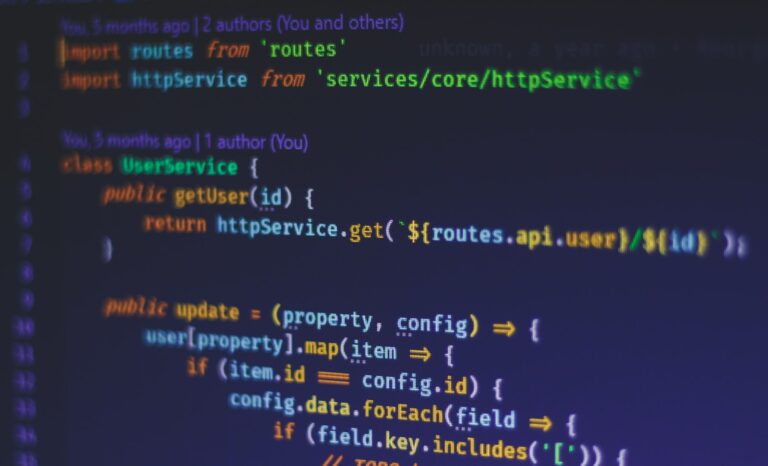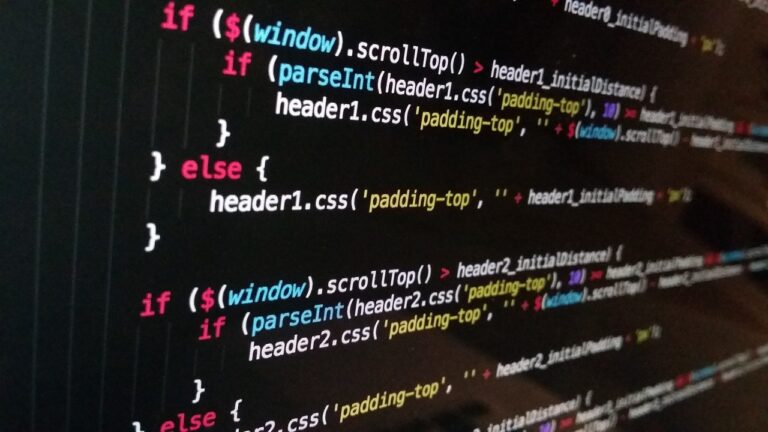If you’re a JavaScript developer or have been working with JavaScript, you would have come across the term “hoisting”. JavaScript hoisting is the default behavior of moving all declarations to the top of the current scope. This may lead to some strange and unexpected behaviors if you’re not aware of how it works.
In this article, we will explore JavaScript hoisting in detail, discussing its definition, examples, benefits, and pitfalls. We will also cover some advanced concepts and techniques related to hoisting that can help you write better code.
Key Takeaways
- JavaScript hoisting is the default behavior of moving all declarations to the top of the current scope.
- Hoisting impacts both variables and functions in JavaScript.
- Understanding hoisting concepts and best practices can lead to more readable and efficient code.
What is JavaScript Hoisting?
JavaScript hoisting is a mechanism that moves variables and function declarations to the top of their respective scopes during the compilation stage. In simple terms, it means that you can use a variable or a function before it is declared in your code.
Hoisting is a crucial concept to understand when working with JavaScript, as it can have a significant impact on how your code behaves.
When JavaScript code is compiled, it is first scanned for all variable and function declarations within the current scope. These declarations are then moved to the top of their respective scope, regardless of where they appear in the code.
How Does Hoisting Work in JavaScript?
Hoisting occurs in two phases in JavaScript: the creation phase and the execution phase.
During the creation phase, JavaScript moves all variable and function declarations to the top of their respective scope. However, the assigned values of variables are not hoisted, only the declarations.
During the execution phase, JavaScript then assigns values to the variables and executes the code line by line.
It is essential to note that only variable and function declarations are hoisted, not variable initializations, or function expressions. Therefore, any variables that are declared but not initialized will have a value of undefined until they are assigned a value later in the code.
Understanding hoisting in JavaScript is critical to writing efficient and reliable code. Being aware of the hoisting mechanism can help you avoid unexpected bugs and errors in your code.
Hoisting in JavaScript – Examples and Effects
The hoisting concept in JavaScript can impact the code execution in unexpected ways. Let’s take a look at some examples of hoisting in JavaScript and analyze its effects.
Example 1: Variable Hoisting
Consider the following code snippet:
// Code snippet 1
function example() { console.log(message); var message = "Hello World!"; } example();
In Code snippet 1, we define a function that logs the message variable to the console, and then declares and initializes the message variable. When we invoke the example() function, we might expect it to log “Hello World!”. However, due to hoisting, the variable declaration is moved to the top of its scope, resulting in the following code being executed:
// Execution after hoisting
function example() { var message; console.log(message); // message is undefined message = "Hello World!"; } example();
As a result of hoisting, the message variable is undefined when we try to log it to the console, leading to unexpected behavior.
Example 2: Function Hoisting
Now let’s consider the following code snippet:
// Code snippet 2
example(); function example() { console.log("Hello World!"); }
In Code snippet 2, we define a function called example() and then invoke it before its declaration. Due to hoisting, the function declaration is moved to the top of its scope, resulting in the following code being executed:
// Execution after hoisting
function example() { console.log("Hello World!"); } example();
As a result of hoisting, we are able to invoke the example function before it’s declared, leading to expected behavior.
Example 3: Block Scope and Hoisting
Hoisting in JavaScript can also lead to unexpected behavior in block-scoped code. Consider the following code snippet:
// Code snippet 3
function example() { if (true) { var message = "Hello World!"; } console.log(message); } example();
In Code snippet 3, we define a function that declares a message variable within an if block. We then try to log the message variable outside of the block. Due to hoisting, the variable declaration is moved to the top of its function scope, resulting in the following code being executed:
// Execution after hoisting
function example() { var message; if (true) { message = "Hello World!"; } console.log(message); // "Hello World!" } example();
As a result of hoisting, we are able to log the message variable outside of the block, even though it was declared inside the block, leading to unexpected behavior.
These examples demonstrate how hoisting can impact the code execution in JavaScript. It’s important to understand how hoisting works and how it can affect your code to avoid unexpected results.
The Benefits of Hoisting in JavaScript
JavaScript hoisting may seem like a confusing concept at first glance, but it offers a number of benefits that can make your code more readable, organized, and error-free.
Improved readability: By moving function and variable declarations to the top of their scope, hoisting can help make your code easier to read and understand. This is because it allows you to quickly see which functions and variables are available within a given block of code.
Better organization: Hoisting can also facilitate better organization of your code. By declaring all your functions and variables at the top of their respective scopes, you can create a logical structure that makes it easier to navigate your code and understand its purpose.
Error prevention: Another benefit of hoisting is that it can help prevent errors in your code. By ensuring that all functions and variables are declared before they are used, hoisting can minimize the risk of referencing undefined values or invoking functions that have not been defined yet.
Best Practices for Using Hoisting in JavaScript
While hoisting can be a useful tool for improving the readability and robustness of your JavaScript code, it is important to use it properly to avoid introducing bugs or confusion.
- Avoid creating global variables: When declaring variables, it is important to always use the var, let, or const keyword to avoid creating global variables that can potentially clash with other parts of your code.
- Declare variables at the top of their scope: To optimize code readability and maintainability, it is a good practice to declare all variables at the top of their respective functions or blocks.
- Use function declarations over function expressions: When defining functions, it is generally better to use function declarations rather than function expressions, as the former are automatically hoisted to the top of their scope, while the latter are not.
- Avoid relying on hoisting for order of execution: While hoisting can help ensure that all functions and variables are declared before they are used, it is still important to write your code in a logical, sequential order to avoid unexpected behavior.
Understanding Variable Hoisting
Variable hoisting is a crucial concept to understand when working with JavaScript. It refers to the behavior of moving variable declarations to the top of their respective scopes during the compilation phase. This means that regardless of where a variable is declared, it is actually created at the top of its scope. However, it’s important to note that only variable declarations are hoisted, not their values.
Let’s take a look at an example:
“var x = 10;
function foo() {
console.log(x);
var x = 20;
}
foo();”
In this example, the variable x is declared and assigned a value of 10 before the foo function is called. Inside the function, we attempt to log the value of x to the console, but since the declaration of x inside the function is hoisted to the top, x is actually undefined at the time of the console.log statement. This highlights a potential issue with hoisting and underscores the importance of declaring variables at the top of their scope.
Furthermore, hoisting can also lead to unexpected results if not handled properly:
“var x = 10;
if (x < 20) {
var x = 30;
console.log(x);
}
console.log(x);”
In this example, we declare x with a value of 10. Inside the if statement, we declare x again with a value of 30. When we log the value of x inside the if statement, it outputs 30 as expected. However, when we log the value of x outside of the if statement, it also outputs 30, even though we might expect it to output the original value of 10. This is due to the hoisting behavior, where the variable declaration of x inside the if statement is hoisted to the top of the scope, effectively overwriting the original declaration of x.
Therefore, to avoid confusion and unexpected results, it’s best practice to declare variables at the top of their respective scopes and to avoid redeclaring variables with the same name.
Hoisting Functions in JavaScript
Functions are hoisted differently from variables in JavaScript. While variable declarations are hoisted to the top of their scope, function declarations are hoisted in their entirety. This means that the entire function body is moved to the top of the scope, allowing it to be called before it is declared in the source code.
However, it is important to note that only function declarations are hoisted. Function expressions, such as anonymous functions or arrow functions, are not hoisted and behave like regular variables.
Let’s take a look at an example:
// Example 1
sayHello(); function sayHello() { console.log("Hello!"); }The output of this code will be “Hello!”. This is because the function declaration is hoisted to the top, allowing us to call it before it is declared in the code.
On the other hand, if we use a function expression in the same example, the output would be different:
// Example 2
sayHello(); const sayHello = function() { console.log("Hello!"); }This code will result in an error, as the function expression is not hoisted and the variable ‘sayHello’ is not yet defined at the time of the function call.
When using hoisted functions, it is important to keep in mind the potential for naming conflicts and to ensure that function names are unique within their scope. Additionally, it is recommended to only use hoisted functions sparingly and instead declare functions in their appropriate order within the code.
Common Pitfalls and Best Practices for Using Hoisting
While hoisting can provide numerous benefits to code organization and execution, it can also lead to unexpected results if not used correctly. Here are some common pitfalls to avoid and best practices to follow when using hoisting in your JavaScript code:
1. Avoid Using Var Declarations
Variables declared with the var keyword are automatically hoisted to the top of their scope, which can lead to unintended consequences. Instead, use let or const to declare variables, which are not hoisted and have block scope.
2. Declare Variables and Functions at the Top of the Scope
To prevent confusion and ensure consistency in your code, declare all variables and functions at the top of their respective scopes. This also allows for easier identification of variable and function names throughout the code.
3. Use Function Declarations Rather Than Function Expressions
Function declarations are hoisted to the top of their scope, while function expressions are not. As a best practice, use function declarations to ensure the function is defined before it is called.
4. Avoid Reliance on Hoisting for Code Execution
While hoisting can assist with code organization, it should not be relied upon for code execution. Instead, write your code in a clear and concise manner to ensure proper execution flow.
By following these best practices and avoiding common pitfalls, you can effectively leverage hoisting to improve the readability and performance of your JavaScript code.
Advanced Concepts and Techniques Related to Hoisting
While the basic concept of hoisting in JavaScript is relatively simple, there are several advanced concepts and techniques related to hoisting that can significantly impact your code. Understanding these concepts can help you write more efficient, reliable, and optimized code.
Hoisting in Nested Scopes
Hoisting applies to all types of scopes in JavaScript, including nested scopes. When a function is declared within another function, it creates a new scope that is nested within the outer function’s scope. Hoisting works the same way in nested scopes, with all the function and variable declarations being moved to the top of their respective scopes.
It’s important to note that variables declared in an inner scope can be accessed from the outer scope, but not vice versa. This is because JavaScript uses lexical scoping, which means that a nested function has access to the variables declared in its parent function.
Function Declarations vs Function Expressions
Hoisting works differently for function declarations and function expressions in JavaScript. Function declarations are hoisted to the top of their scope, which means they can be called before they are declared in the code. Function expressions, on the other hand, are not hoisted and cannot be called before they are declared.
It’s important to understand the difference between function declarations and expressions, as this can impact the behavior of your code and lead to unexpected results.
Hoisting in Different JavaScript Versions
The behavior of hoisting can vary between different versions of JavaScript. For example, in ES6 (ECMAScript 2015), the let and const keywords were introduced, which have different hoisting behavior than the var keyword. Variables declared with let and const are not hoisted to the top of their scope and cannot be accessed before they are declared.
It’s important to keep up with the latest JavaScript versions and understand how hoisting works in each version to write optimized and efficient code.
“Understanding advanced concepts and techniques related to hoisting can help you write better code and prevent bugs and errors.”
Conclusion
In conclusion, JavaScript hoisting is an important concept that every developer should understand. By knowing how hoisting works and how it affects their code, developers can write more efficient, reliable and readable code. To recap, hoisting refers to the process of moving function and variable declarations to the top of their scope during the compilation phase. This allows developers to use functions and variables before they are declared, which can help organize their code and prevent errors.
Takeaways
To effectively use hoisting in JavaScript, it’s important to keep in mind its benefits, limitations, and best practices. While hoisting can certainly help improve code readability and maintainability, it can also lead to unexpected bugs if not used properly. As such, developers should be aware of common pitfalls and be careful not to abuse hoisting. Additionally, developers should stay up-to-date with the latest JavaScript standards and be aware of how hoisting behaves in different versions of the language.
By following these guidelines, developers can use hoisting to their advantage and write better JavaScript code. Remember, while hoisting may seem complex at first, with practice and experience, you can become a master of this powerful programming technique.







